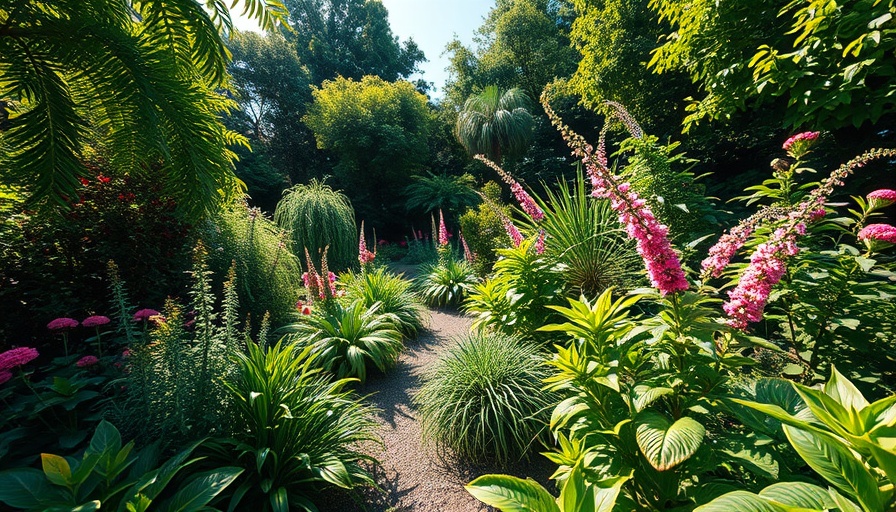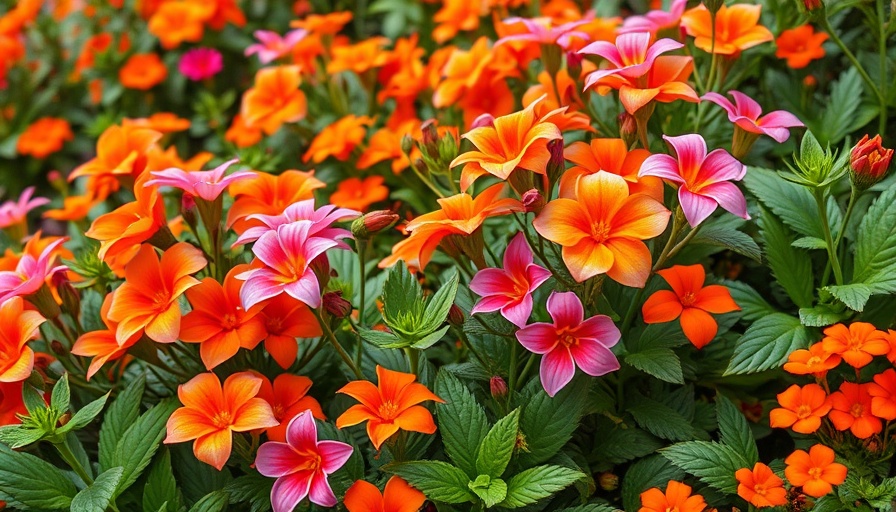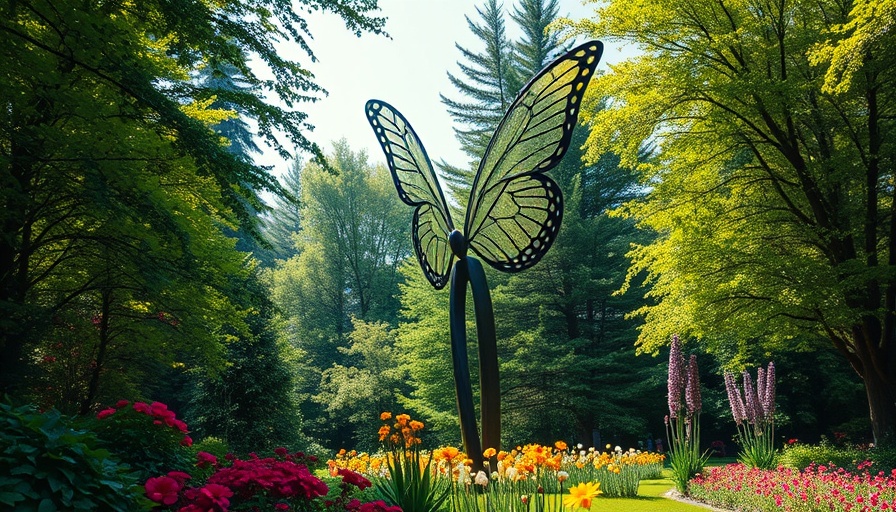
Transform Your Approach to Garden Watering Efficiently
For many homeowners, the thought of watering their garden conjures images of lugging heavy cans or tangling with hoses. However, such traditional practices can be time-consuming and inefficient, especially for larger gardens. As drought conditions become more prevalent, mastering garden watering strategies not only preserves plants but also saves valuable resources. Here, we outline innovative techniques to maximize water efficiency, inspired by expert insights and sustainable practices.
Understanding Soil: The Treasure Trove of Water
At the heart of effective garden watering lies your soil. As Janet Manning from the Royal Horticultural Society emphasizes, healthy soil acts as a significant water reservoir. To boost its capacity, incorporating mulch is essential. Mulch aids in water retention by providing a protective layer that slows evaporation while feeding beneficial microorganisms. This process enhances nutrient availability to plant roots. For substantial drought resilience, consider using chunky or straw-based mulch that allows water penetration while insulating soil temperature, offering dual advantages.
Effective Mulching Techniques: Timing and Type Matter
When to mulch is just as crucial as the type of mulch used. Janet suggests that early spring or autumn are ideal for applying finer mulch, provided the soil is damp. Conversely, during hot weather, opt for chunkier mulch varieties, as they will allow rainwater to flow through efficiently. Remember that maintaining your mulch regularly fosters soil health—Charles Dowding recommends a couple of inches yearly, while others prefer ongoing maintenance to ensure consistent moisture levels.
The Role of Irrigation Systems: When More is Better
While organic methods such as mulching are pivotal, modern irrigation systems also play a significant role in water conservation. Drip irrigation, for example, directly supplies water to a plant's root zone, drastically reducing waste. This method is particularly beneficial in reducing outdoor water use by up to 50%. Setting up timers for automated watering can safeguard against over and under-watering, allowing for an effortless and efficient approach to maintaining green spaces.
Drought-Resilient Plant Choices: Reducing Water Needs
Selecting drought-resistant plants is another strategic way to cut down on watering demands. Native plants, which are adapted to local climates, require less maintenance and water once established. Using perennials known for their sustainability can lead to a vibrant garden that stands resilient in the face of climate exigencies without needing constant attention. When planning your garden layout, consider incorporating more of these plants into your design.
Future Trends in Sustainable Garden Watering
As climate patterns continue to evolve, homeowners must adapt their gardening strategies. Technology is advancing into water management solutions, from smart sensors that monitor soil moisture levels to AI-driven systems that optimize watering times based on real-time data. Greater awareness and adoption of sustainable watering practices will likely pave the way for more efficient and responsible water use in home gardening.
Reimagining Your Garden's Watering System
Adopting a proactive stance on garden watering not only conserves resources but enhances your landscape’s vitality. By focusing on soil health, mulching techniques, and integrating modern irrigation technologies, homeowners can ensure plants remain well-nourished without draining time, effort, or money. As you embark on this sustainable gardening journey, remember that small shifts in your approach can lead to significant impacts on both your garden and the environment.
If you are looking to revolutionize your watering routine, now is the time to consider these strategies for a more efficient gardening experience. Explore the benefits of mulch, assess your plant choices, and invest in appropriate irrigation systems to create a thriving, sustainable garden.
 Add Row
Add Row  Add
Add 




Write A Comment